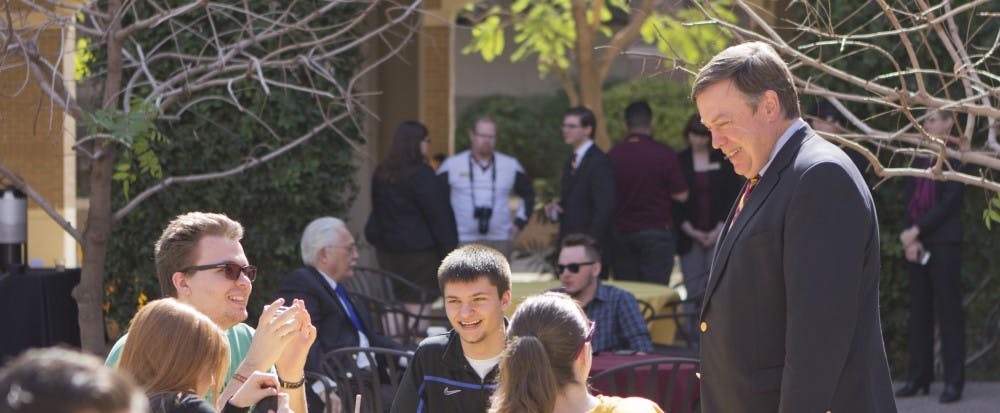In response Joan LeBeau's April 14 column "Tuition rates: a story of pots and kettles."
The column published this week about the administrative growth that has occurred at
many universities makes the classic mistake of taking generalized information and errantly
applying it to a particular case where the data does not stand up.
While other universities have seen their administrations grow, Arizona State University has been
operating at a high level of efficiency, especially since it eliminated 1,800 positions after the 2008
global economic downturn:
- ASU has the lowest number of full time employees per student of its peers.
- The total tuition, fees and state appropriations per degree awarded at ASU is well below the median of other high research universities and has declined 14 percent over the last six
years.
- And while the size of our faculty has remained steady, innovation and entrepreneurship have helped us to more than triple our research enterprise and dramatically improve our
graduation rates.
It is regrettable that state leaders decided to decrease the public investment in ASU by $53 million,
or by 15 percent on a per-student basis, and that the institution needed to ask its in-state students
and families to pay a temporary $320 surcharge in the upcoming academic year.
But it’s important to note that we make strong efforts to balance tuition affordability, predictability,
and quality education at ASU, and that we have maintained that low-tuition policy resulting in a
cumulative increase in resident tuition of only $276 over the last three years.
We hope that Arizona families continue to see the value in ASU: A new freshman from Arizona
would be asked to pay $10,478 in total tuition, surcharge and mandatory fees in Fall 2015 at ASU.
At UA, that student would be asked to pay $11,403, and at NAU $10,358.
Kevin Galvin
Vice President for Media Relations & Strategic Communications




